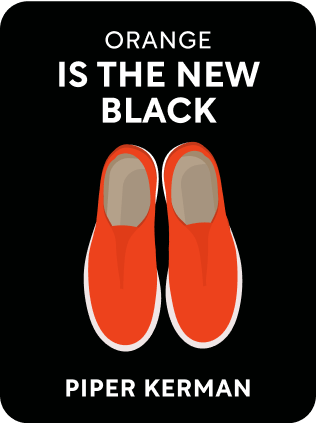

This article is an excerpt from the Shortform summary of "Orange Is The New Black" by Piper Kerman. Shortform has the world's best summaries of books you should be reading.
Like this article? Sign up for a free trial here .
What kinds of prison education programs are there? What does Piper Kerman say about these programs in Orange Is the New Black?
Prison education programs are intended to help inmates get an education necessary to enter the workforce outside of prison. But these programs are often inadequate for many reasons that Piper Kerman observed in Orange Is the New Black.
Read more about prison education programs in Orange Is the New Black.
The Failures of Prison Education Programs
Although Danbury did offer a GED program for prisoners, it was notoriously inadequate. The teachers didn’t care about their students or their results and the prison education programs were marred by student delinquency and misbehavior.
The situation was all the more tragic because inmates who lacked a high-school education were not eligible for wage increases unless they completed the GED program for prisoners. Natalie, Piper’s bunkmate in the Ghetto, was one such prisoner. Although Natalie was highly skilled as a baker, her earnings were capped at $0.14 per hour because she lacked a high school diploma. The prison education programs didn’t have room for people with skills like Natalie’s.
Even worse, the failures of the GED programs for prisoners put recently released prisoners, especially women, in an incredibly vulnerable position. Without a high-school education, most of these ex-convicts were unable to secure legal and gainful employment. This, of course, led them right back to a life of crime in the underground economy—as prostitutes or drug dealers—which, in turn, landed them right back in prison.
Despite the obvious failures of the program, some women did manage to complete it and earn their prison GEDs. The spring that Piper was at Danbury, Natalie graduated. Graduation Day was always a huge occasion for celebration at camp. It was an extraordinary accomplishment for these women, who overcame enormous struggles in their journey to earn an education and build better lives for themselves and their families. Many entered the program with almost no formal education at all, having dropped out of school more than a generation ago. Their differences with the worldly and college-educated Piper could not have been more stark, but Piper was nevertheless ecstatic on Graduation Day. Piper was overcome with emotion when Natalie was called to receive her diploma.
Not long after Natalie’s graduation, Piper began mentoring an inmate, an “OG” named Mrs. Jones. Piper had a reputation as book-smart and Mrs. Jones wished to tap into Piper’s academic skills to help her in her coursework. Mrs. Jones was Danbury’s longest-serving inmate, incarcerated there since the mid-80s. She also seemed to Piper to be somewhat mentally unstable—a combination, Piper learned, of domestic abuse at the hands of her husband and of her long incarceration. But she thought the prison education programs could help.
Now, however, Mrs. Jones was due to be released within the year and she wanted to wrap up her prison GED before she stepped back out into the real world. She needed to write a paper for her business course, but, as Piper soon realized, Mrs. Jones expected Piper to do all the work. Piper had qualms about helping a student essentially cheat in her coursework, but reasoned that the greater injustice would be to let Mrs. Jones fail.
Piper dutifully wrote a generic three-page essay for the course, for which Mrs. Jones received an A in the prison GED course. She ultimately helped Mrs. Jones “earn” an A- for the course. The sudden transformation of a barely literate student into one who could write eloquent term papers on the Industrial Revolution and hybrid cars never raised the slightest suspicion from the clearly apathetic course instructors in the prison education program.
But when Mrs. Jones graduated with her cohort, Piper had the privilege of witnessing the speech of a prisoner named Bobbie, who was the class valedictorian. Bobbie was exuberant and inspiring, reminding the women on stage that they had overcome extraordinary odds to earn their degrees and that it was proof they could achieve anything. It was a powerful assertion of the inmates’ agency—a victory over the systems of oppression and discrimination that held them back for their entire lives. For her part, Mrs. Jones sent Piper a card with a single message on the back: “To a dear friend. I made it. God bless you.”
A Failing System
The failures of the prison system were all around Piper. The American criminal justice system was very good at locking up addicts but spectacularly bad at treating their addiction. The ideology driving the prison system was entirely retributive—there was almost no focus on restoration or rehabilitation, on making sure that people who were released from prison didn’t come back. Piper knew that many inmates would simply become part of the revolving- door criminal justice system, falling back into lives of addiction, crime, and almost-inevitable reincarceration, especially with failing prison education programs.
The consequences of this failing system were everywhere—broken families, squandered opportunities, and ruined lives. Every time Piper saw an inmate walking around with track marks (scars from injecting heroin) on their arms, she felt tremendous guilt. Even though it had been long ago, her criminal activity with Nora contributed to this suffering. On the other side of her glamorous, thrill-seeking, jet-setting life with Nora was terrible social destruction, lives lost to addiction, and families torn asunder.
Even events that were meant to be uplifting were sobering reminders of the grim consequences of incarceration on these women and their families. Each year, the prison organized a Children’s Day carnival with games and activities for kids while they came to visit their incarcerated mothers. Piper manned the face-painting booth at the carnival and genuinely enjoyed meeting and bonding with the children. They were sweet kids who were clearly suffering from the absence of a parent. It was emotional to see so much happiness in such a dreary place. But witnessing the tearful goodbyes at the day’s end was a terrible reminder of the human toll of the prison system.

———End of Preview———
Like what you just read? Read the rest of the world's best summary of Piper Kerman's "Orange Is The New Black" at Shortform .
Here's what you'll find in our full Orange Is The New Black summary :
- The real, more nuanced story behind the hit TV show
- How upper-class Piper Kerman landed in prison on drug charges
- The key lessons Kerman learned about society and herself






